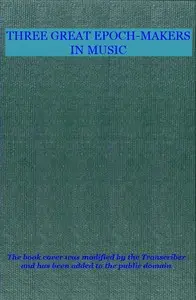Symphony No. 5 in C minor, Opus 67 by Ludwig van Beethoven is a deep look into a famous piece of classical music from the late 1700s and early 1800s. It shows how Beethoven changed symphonies forever, focusing on the well-known sound and structure of one of his greatest works. The symphony is broken down into its four parts, each with its own sound and feeling. The book also lets you hear the music with MIDI files, and it probably talks about how Beethoven used different instruments and new ways of writing music. It also helps you understand what was happening in the world when the music was written, showing how it moved music from the Classical to the Romantic period.

Symphony No. 5 in C minor, Opus 67
By Ludwig van Beethoven
Experience the dramatic journey of a groundbreaking symphony that reshaped classical music.
Summary
About the AuthorLudwig van Beethoven was a German composer and pianist. He is one of the most revered figures in the history of Western music; his works rank among the most performed of the classical music repertoire and span the transition from the Classical period to the Romantic era in classical music. His early period, during which he forged his craft, is typically considered to have lasted until 1802. From 1802 to around 1812, his middle period showed an individual development from the styles of Joseph Haydn and Wolfgang Amadeus Mozart, and is sometimes characterized as heroic. During this time, Beethoven began to grow increasingly deaf. In his late period, from 1812 to 1827, he extended his innovations in musical form and expression.
Ludwig van Beethoven was a German composer and pianist. He is one of the most revered figures in the history of Western music; his works rank among the most performed of the classical music repertoire and span the transition from the Classical period to the Romantic era in classical music. His early period, during which he forged his craft, is typically considered to have lasted until 1802. From 1802 to around 1812, his middle period showed an individual development from the styles of Joseph Haydn and Wolfgang Amadeus Mozart, and is sometimes characterized as heroic. During this time, Beethoven began to grow increasingly deaf. In his late period, from 1812 to 1827, he extended his innovations in musical form and expression.






![Franz Haydn's 104th Symphony [1794-5]
MIDI file by Joseph Haydn](https://cdn.a2-host.cloud/2x6Bt1cQSHK_FjTbH2Uug5QyWqvRBoJNPMeBgHh2Wcc/rs:fill:215:325:0/g:ce/aHR0cHM6Ly9zcC1hc3NldHMuczMudXMtd2VzdC0wMDQuYmFja2JsYXplYjIuY29tL2Jvb2svMjc2L0ZyYW56X0hheWRuc18xMDR0aF9TeW1waG9ueV8xNzk0NV9NSURJX2ZpbGVfY292ZXIuanBn.webp)










